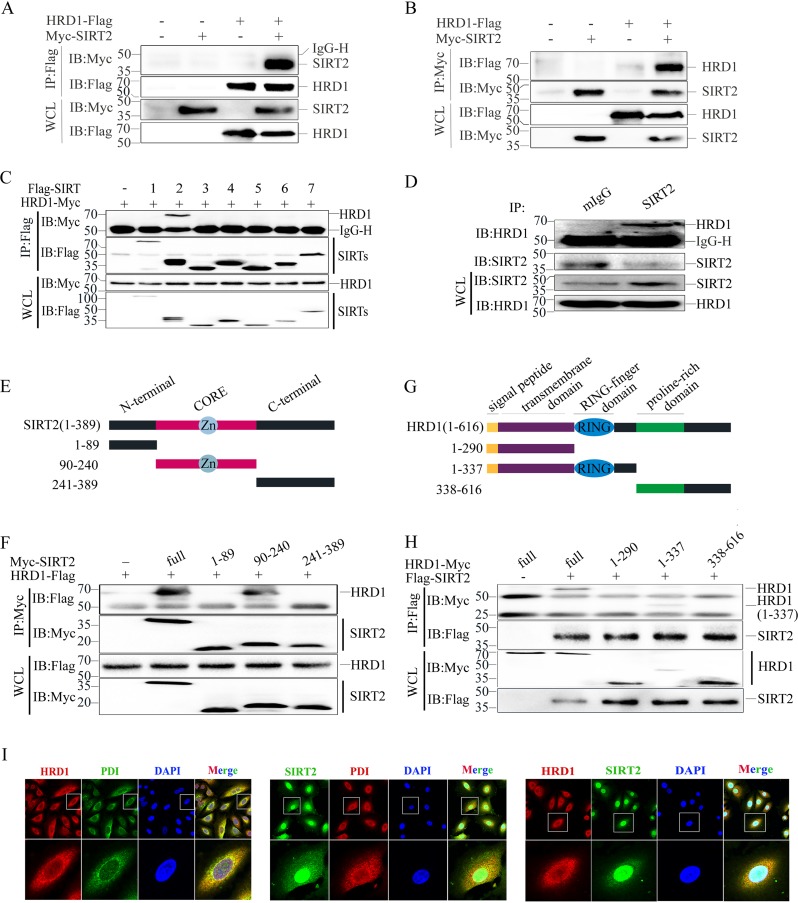FIG 2.
SIRT2 interacts with HRD1. (A) The Myc-SIRT2 expression plasmid was cotransfected with or without HRD1-Flag into HEK293T cells. The SIRT2 protein was immunoprecipitated (IP) with the anti-Flag antibody, and the expression of SIRT2 and HRD1 in the whole-cell lysate (WCL) was confirmed by immunoblotting (IB) with antibodies against Myc and Flag. (B) The HRD1-Myc expression plasmid was cotransfected with or without Flag-SIRT2 into HEK293T cells. The HRD1 protein was immunoprecipitated with anti-Flag antibody, and the expression of SIRT2 and HRD1 in the WCL was confirmed by IB with antibodies against Myc and Flag. (C) HEK293T cells were cotransfected with the HRD1-Myc expression plasmid and Flag-SIRT1 to Flag-SIRT7. The HRD1 protein was immunoprecipitated with the anti-Flag antibody. The expression of HRD1 and SIRTs in the WCL was confirmed by IB with antibodies against Myc and Flag. (D) The endogenous interaction of HRD1 and SIRT2 was evaluated in A549 cells. A normal mouse IgG (mIgG) was used as a control. (E) Schematic representation of SIRT2 and its mutants, indicating that SIRT2 contains a CORE domain. (F) Schematic representation of HRD1 and its mutants, showing that HRD1 protein contains an N-terminal signal peptide, transmembrane domain, zinc finger domain, and C-terminal proline-rich domain. (G) The interactions of SIRT2 and its mutants with HRD1 protein were evaluated. HRD1-Flag plasmids were cotransfected with SIRT2 or each of its mutants, and their interactions were analyzed as for panel A. (H) The interactions of SIRT2 with HRD1 and its mutants were evaluated. Flag-SIRT2 plasmids were cotransfected with HRD1 or each of its mutants into HEK293T cells, and their interactions were analyzed as for panel A. For panels A to D, F, and H, numbers on the left are molecular masses, in kilodaltons. (I) Colocalization of HRD1 and PDI, SIRT2 and PDI1, and HRD1 and SIRT2 in HeLa cells. The cellular localization of HRD1, SIRT2, and PDI was examined by immunofluorescence staining with corresponding antibodies. 4,6-Diamidino-2-phenylindole (DAPI) was used to stain the DNA.

